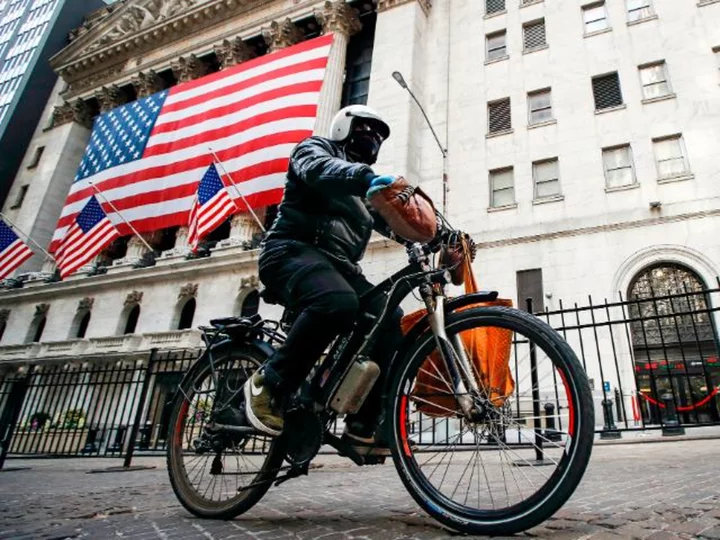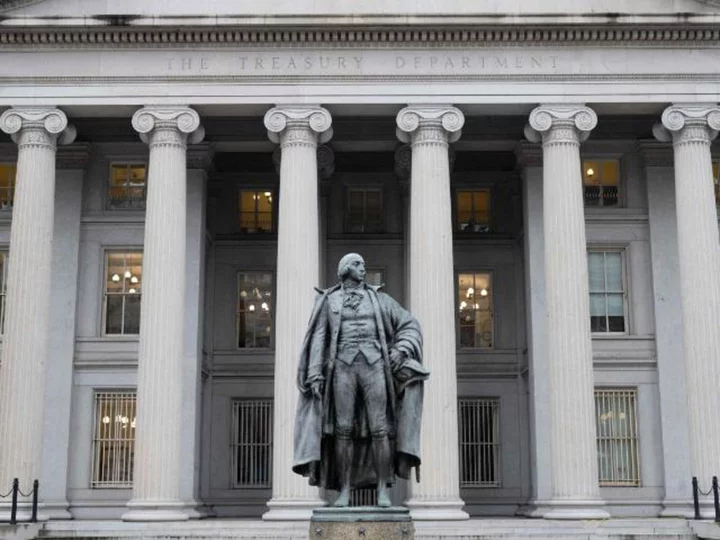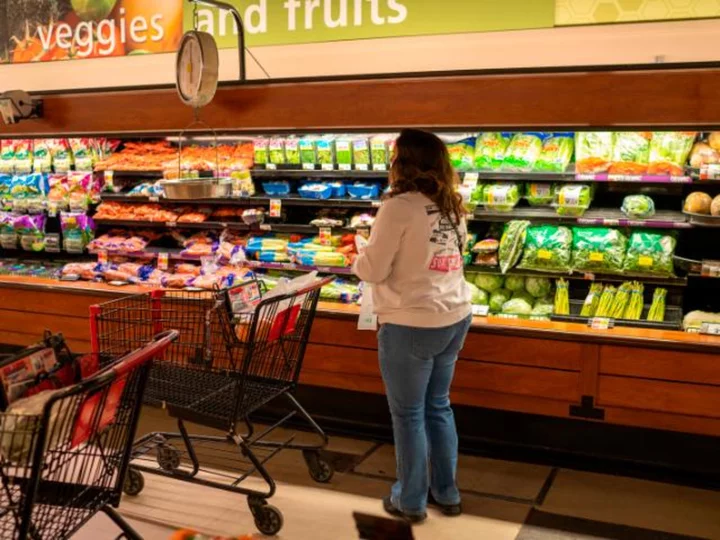Lazarus Limo usually starts his day at 10 a.m. ET, driving passengers and delivering food for Uber around Chapel Hill, North Carolina.
"I tend to set a minimum target of how much I should get by the end of the day. As soon as I get my target, that's it; I'm done for the day," he said. His goal is usually to make between $200 and $300 and, depending on the day, achieving it may take him between 8 and 10 hours, he told CNN.
But that's just his weekday job.
On weekends, Limo, who is 28 years old, works as a "Dasher," delivering food orders for DoorDash.
He is one of millions of people in the United States who participate in the so-called "gig economy," a term that has grown in popularity over the last decade to describe the rise in freelancing work through apps like Uber, Lyft, Doordash and Instacart.
Government data on this group of workers is elusive. The last time the Bureau of Labor Statistics officially tracked workers with alternate job arrangements was 2017. But workplace experts say the number of gig workers is growing, and and their impact is being felt throughout the economy. It could even be distorting government economic data, they say. For example, easy-to-access work through mobile phones may be keeping the national unemployment rate lower than it would be without the rise of these workers. It may also be a factor helping more people avoid bankruptcies, providing a fallback option for those who have been laid off from work in recent years, they say.
"People who have access to the gig economy borrow less money than people who don't. You can think of it as an alternative to debt for some people — as a way to get through volatile times," said Louis Hyman, a professor of labor and business at Cornell University. "Society needs to account for these different kinds of experiences."
Millions earn money from online platforms
During the Covid pandemic, newer, digital-first work platforms like DoorDash and Uber Eats surged in popularity as millions sheltered at home and turned to online delivery. Recent data indicates that the number of people working with these platforms has grown, too. A paper published by the University of Chicago in May that tracked earnings through tax filings found that the number of people who report income from platform-based gig work to the IRS has exploded in recent years from just over one million workers to nearly five million — a clear indication of just how many more people use tech platforms to help earn a living.
Internal data from the companies themselves shows an even bigger number of gig economy participants. In February, Uber reported that its "earners," as it calls its drivers and food delivery workers, reached a record high of 5.4 million in the fourth quarter of 2022. DoorDash currently has more than two million monthly active Dashers, according to Jenn Rosenberg, a company spokesperson. More than 13 million Dashers have used the platform since it launched a decade ago. Flex, a trade association representing DoorDash, Grubhub, HopSkipDrive, Instacart, Lyft, Shipt and Uber, estimates that more than 23 million Americans have earned money through an online platform in the past 12 months.
Hyman said the growth of these online platforms was "made possible by the shortcomings of service work" since workers can make their own hours — a benefit they may not get in traditional service industry jobs.
"It's a backstop in a lot of ways, and it always is an alternative. If you don't want to work in a restaurant or the other kinds of service work, you could do this instead," he said.
The economic impact
Despite the fact that many gig workers don't have access to benefits like workplace-provided health insurance or retirement benefits, which come from a traditional 9-5 job, there are some advantages to online gig work.
"It allows people to search longer for their next job. If they are laid off, they have more of a safety cushion beyond unemployment insurance and relying on family and friends and their savings," said Erica Groshen, the former commissioner of the Bureau of Labor Statistics.
Limo falls into that category. He began using platforms like Uber, DoorDash and Grubhub part-time to help pay for college but began his full-time gig work after a contract to work as an electrical technician ended last year. He sees the work as temporary, though. "Once I make a certain amount of income, then I will not need to do this," he said.
A 2020 study from the Massachusetts Institute of Technology found that platforms like Uber and Lyft may help reduce the strain on unemployment insurance and help hold down personal debt by comparing unemployment data, credit data from Equifax and car registration data. The study found that laid-off workers with access to Uber were less likely to apply for unemployment insurance benefits and rely on borrowing money.
That phenomenon may be partially reflected in current economic data: Despite an overall slowing of economic growth, the unemployment rate has remained at multi-year lows, and is currently just 3.6%. Personal bankruptcies are lower than pre-pandemic levels, as well. According to government data, there were more than 388,000 non-business bankruptcies between March 2022 to March 2023, significantly lower than levels from a few years ago: In 2019, more than 750,000 non-business bankruptcies were filed.
According to DoorDash and Uber, most of their workers do the job part time to supplement other sources of income. According to Doordash, 90% of their workers work fewer than 10 hours per week for the platform. As of the first quarter of 2023, Uber said 48% of their "earners" average fewer than 10 hours per week online, and 71% average fewer than 20.
The lack of data poses challenges
Gig workers float under the radar when it comes to being officially counted by the federal government. The last BLS survey on workers in short-term jobs and alternative working arrangements found that just 1% of the workers used an app to work. Susan Houseman, director of research at the W.E. Upjohn Institute for Employment Research in Kalamazoo, Michigan, said she believes the federal government significantly undercounted workers in the survey.
A spokesperson for the BLS confirmed that it will restart a new version of its survey to count people working in temporary or alternative jobs, and a public release of the data is expected "some time in 2024."
Groshen said that official government data on the working situations of gig economy participants would greatly benefit lawmakers looking to regulate the industry.
"We all need that information to guide our investments, to guide our career choices, for our policymakers to make good policy decisions. All of this relies on the data, and we've been shortchanging ourselves on that," Groshen said. "We could do so much better."
Recently, local governments have attempted to bolster platform gig workers' protections. In June, New York City announced a minimum wage of $17.96 for app food delivery workers. DoorDash, Grubhub and Uber sued the city, saying the law would harm customers and delivery workers. Earlier this month, a judge temporarily blocked the law's enforcement. In 2020, California passed Prop 22, which allows ride-hailing and delivery drivers to be treated as independent contractors with some added benefits, including a minimum earnings guarantee.
The lack of quality data also impacts the broader economy in another way: It prevents the Federal Reserve from getting a complete picture of America's workforce. The Fed's two primary goals when setting monetary policy are price stability and maximum stable employment, and a lack of reliable information on the gig economy labor force may be handicapping the central bank, said Groshen, who was a member of the Federal Reserve System for 27 years.
"They rely very heavily on the official statistics and anything else they can gather to help them form a full picture of economic conditions, and so data that is not very timely or very detailed can mean they are flying a little more blind than they'd like to be," she said. "If they're not capturing all the forms of work, then they're not getting the full picture."









